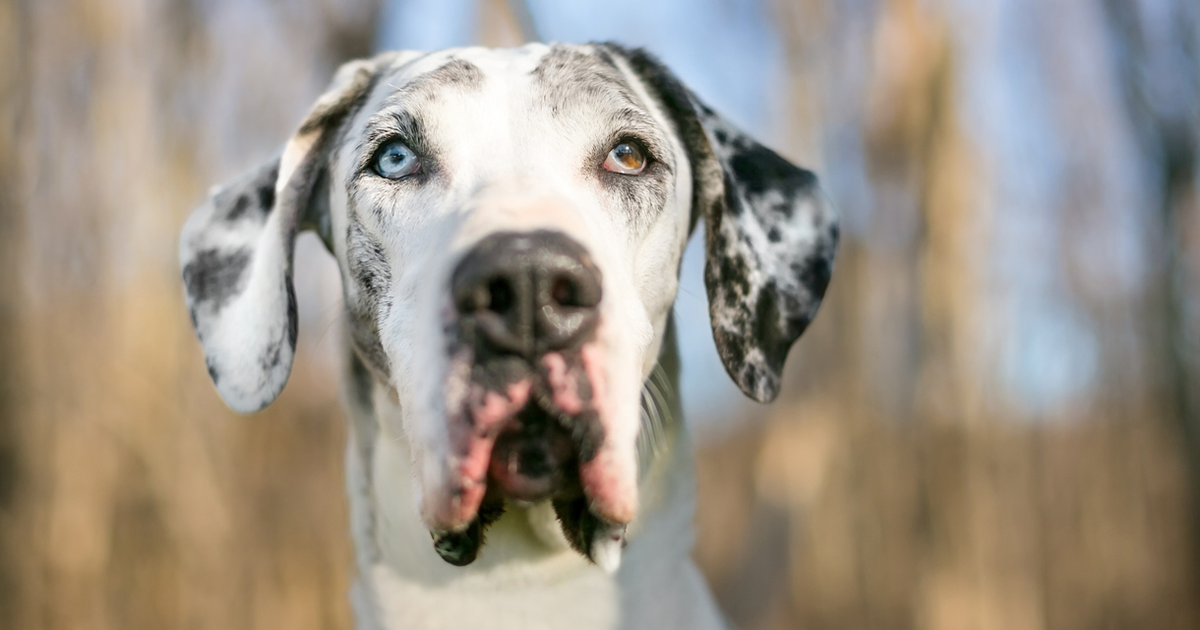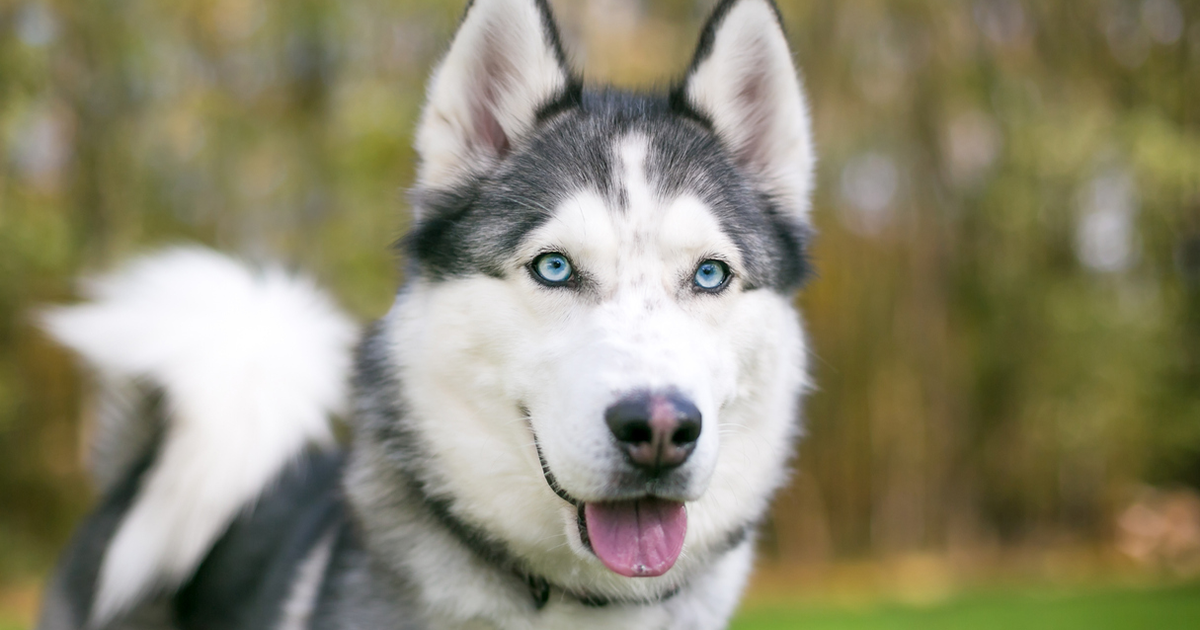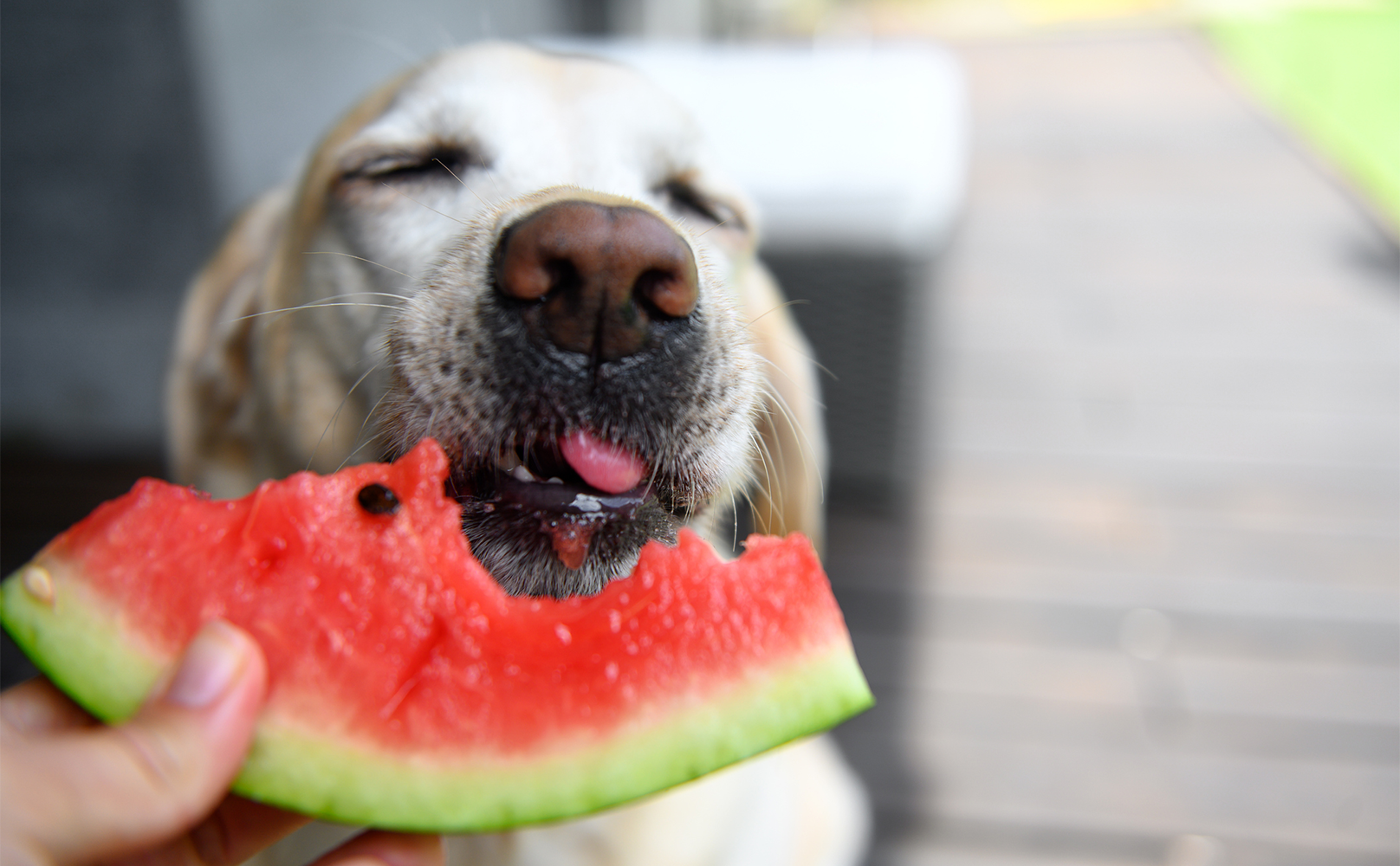It was cold outside that morning. Ohio had a late winter and it seemed like nobody (myself or the dogs) was acclimated to the weather. So we spent the morning inside rather than our daily early morning exercise and outside group play routine. Chopin, my favorite classical composer, was peacefully streaming through the house and eleven of my thirteen dogs were lazily playing on couches, dog beds, and in the middle of wherever I wanted to walk that morning as I cleaned up around the house.
Now, before I go any further, it should be noted that I only take dogs into my house that were either victims of cruelty and neglect (I’m a Humane Agent by day) or were placed on a euthanasia list at a shelter for reactivity issues. Six of the dogs are my own, and there is a constant flux of 4-7 dogs in rehab/foster at my house at any given time. My organization, the Animal Cruelty Task Force of Ohio, takes in several hundred dogs a year from the worst situations imaginable or at the eleventh hour off of a euthanasia list, and every dog with issues starts at my house.
Because of that, there are rules in place for letting dogs decompress, ensuring their enrichment needs are met both mentally and physically, and allowing for slow and controlled introductions as well as slowly integrating them into the group so they can learn to be dogs again.
In moments, though, a dog fight would break out inside the house that would result in some pretty nasty redirected bites to myself as I broke the fight up. It was a dog fight that shouldn’t have happened, and wouldn’t have happened, had I followed my own rules. In fact, in all the years I have worked with dogs, the only issues I’ve encountered have been during moments when I let my guard down and failed to follow the rules.
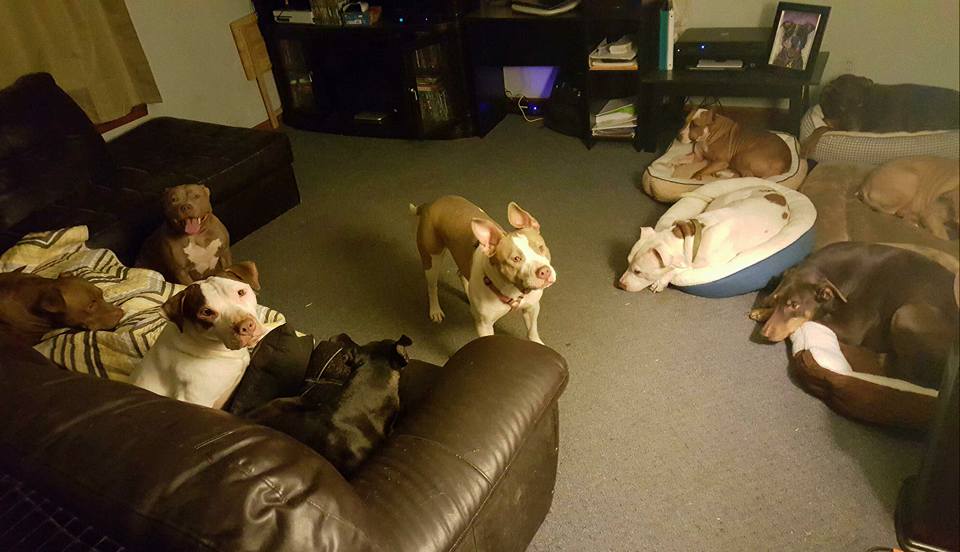

I said in the beginning that eleven of the thirteen dogs were playing. Eleven Pit Bull type dogs and mixes thereof, and 2 Dobermans were all integrated together nicely. The twelfth dog is a feral street dog, and she was in her own kennel. The thirteenth dog was the new kid on the block, who had met all of the dogs except for the previous “new kid on the block.” There was tension between the two dogs, it was clear in their body language and I should have paid better attention to it.
The house was calm, the dogs were all mellow and chill. Breaking protocol because of the good vibes and cold weather, I let the new kid on the block out of her crate and watched her calmly sniff a few dogs. Nothing to worry about. I turned around to fill up my cup of coffee in the kitchen.
That was when all hell broke loose. The new kid on the block and the former new kid on the block locked onto each other in the hallway within a moment, and careening around the corner as fast as I ran from the kitchen was my former bait dog Belle, the last to start a fight but the first to jump in if one ever breaks out despite her incredibly small stature. The other dogs were instantly anxious and tense, and I have already been through one six-dog dog fight by myself.
The first thing I did, since I was by myself and inside the house, was separate and contain the fight from the rest of the dogs. I moved both dogs, still latched onto each other, into my bedroom. I secured the rest of the foster dogs in their crates to avoid any other incidents, and I immediately turned my attention back to the dogs in my room.
Then I wheelbarrowed one dog (you’ll read about that term later) and tried to swing them apart. S***, it’s hard to wheelbarrow a dog in a small bedroom. They came together again. I wheelbarrowed and swung again. They broke apart and came back together again. Wheelbarrowed them one last time, except this time, the moment they broke apart, I shoved a crate between them. They physically couldn’t rush back to each other with a big crate in the way, and that was all it took. Eyes softened, bodies relaxed, everyone stopped staring at each other.
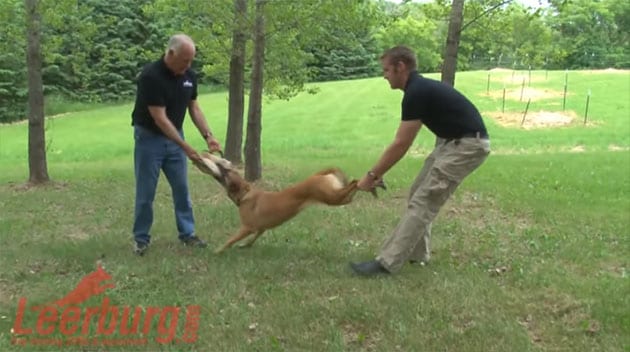

In less than two full minutes, from start to finish, the fight was over.
The dogs had minor injuries that were treated at our local hospital. I wasn’t quite so lucky, and took a few good bites to my hand at some point as I was moving the dogs into the room and away from the rest.
I let my guard down, I was lazy because of the snow and cold weather, and I failed to follow my own rules. While dog behavior is a science, dog rehabilitation is an art (based on the science of dog behavior, preferably) and mishaps will occur. You can greatly minimize your risks though, by learning (and following) the Do’s and Don’ts of dog fights.
The Do’s and Don’ts of Dog Fights
1. Do have a plan and tools in place for decompression, integration, and dog fights BEFORE they happen. Just like my drill sergeant said in the Army, follow the “7 Ps.” Prior Proper Planning Prevents Pi** Poor Performance. Roger that, Sarge.
-Decompression and integration tips (disclaimer, I wrote this article as well).
-Physical methods to safely break up a dog fight (here’s where you can read about the wheelbarrow method, and other tips).
2. Don’t deviate from the plan, not after the 10th dog or the thousandth dog you help. Make sure dogs with tension between each other can go for a long walk, with another helper, long before they are ever brought together (as was my mistake in the story above).
3. Do pay 100% attention to your dogs when introducing them. Get off your phone. Don’t worry about recording it for social media just yet. Don’t just let them loose in the yard unsupervised. Stop pouring yourself another cup of coffee (my bad, again). The best way to stop a dog fight is to prevent it from happening. The best way to prevent a dog fight from happening is to make sure they have your undivided attention so you can redirect and/or remove dogs as you read their body language and supervise interactions.
4. Don’t be alone if at all possible when introducing dogs (mistake #3 for me). In rescue, most dog fights happen during the introduction process or as the dogs are getting to know each other. Doing a dog introduction by yourself can be tough, but breaking up two dogs by yourself who are both latched onto each other can be the most physically demanding, traumatic and difficult endeavor you’ve ever undertaken as an animal rescuer.
5. Do remove all other dogs immediately or move the two fighting dogs away from the other dogs if the fight occurs in a multi-dog household. While breaking up two dogs fighting by yourself can be the pinnacle of traumatic events for you, the stress of two dogs fighting in a multi-dog household will cause your other dogs to go into fight or flight mode themselves and a four or six-dog dog fight can truly be devastating for all involved.
[bp_related_article]
6. Don’t lose your cool. As horrible as they sound and look, dogs can fight for a few minutes and still wind up with only superficial wounds. If your plan (see above) doesn’t work, don’t throw the plan out and jump in to physically break the dogs up. You will get injured and probably more severely than the dogs. Keep trying the safe methods and as the dogs wear themselves out, what may not have worked in the first ten seconds will work after twenty or thirty seconds.
7. Do find ways to humanely disrupt their senses if you can’t physically break the dogs up as mentioned in the links above. You can scream until you’re blue in the face, but unless the dogs are disoriented physically (wheelbarrow method) or their senses are disrupted to the point that it will stop them from engaging, you are wasting your energy screaming at them to stop.
8. Don’t avoid medical attention for you or your dogs. Animal rescuers are called heroes by many, and rightfully so for taking in the animals that have been failed by society. Those titles, though, can leave rescuers too embarrassed to admit that an incident happened. Concern over dog bite statistics can leave those of us who work primarily with dogs that fall into that broad bully breed category afraid to report an incident, and concerns about what may happen to the dog can be another deterrent. We already know dog bite statistics that paint Pit Bull-terrier type dogs in a negative light are bogus.
As for what may happen to the dog, in Ohio at least, the only obligation if the dog has bitten in your own home is to notify the Health Department and quarantine the dog for 10 days. What you should be more concerned about are pain and injuries you can’t see or don’t notice; internal damage or wounds in spaces that may be hard to see can quickly become infected without proper medical care and letting a dog sit in pain without appropriate vet care is the height of irresponsible rescue.
Just to drill this last point home since I know several people who have avoided medical care for these reasons; as a commissioned Humane Agent, I can tell you that in Ohio, anyone who allows pain or suffering to continue without seeking a reasonable remedy or relief is committing animal cruelty. Not only is prompt medical care critical for your pets, you can be guilty of the same acts of cruelty that you are supposed to fight against if you avoid proper after care.
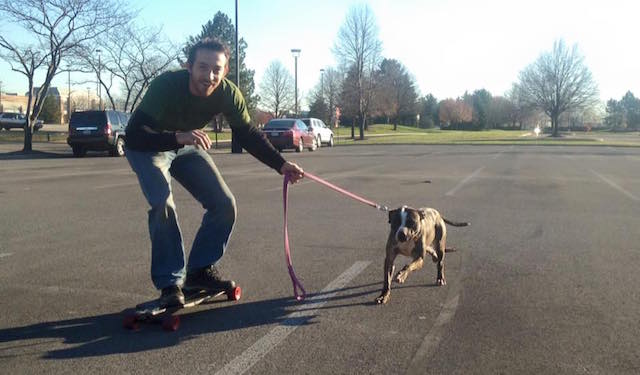

Do keep rescuing. Fights happen. Things happen. Do you need more help reading body language and cues? Acknowledge that and reach out to a local professional. Did you have one too many dogs in the house? Learn your limits and stick to them, that makes you a good rescuer and not a bad one when you say no to another intake request.
We need more rescuers though. We need more fosters. We need people willing to learn from slip-ups rather than throwing in the towel because of them. We have reduced shelter euthanasia numbers by the millions since the ’70s, and the numbers are still in the millions. Nobody is perfect, and as perfect as that amazing animal rescuer you admire may seem…they have had their own share of slip-ups and mishaps.
Stick with it, reach out and get more help to continue doing what you love to do. Get your confidence back, but avoid over-confidence, and above all else, rescue on!
Featured image via Animal Cruelty Task Force Of Ohio/Facebook



